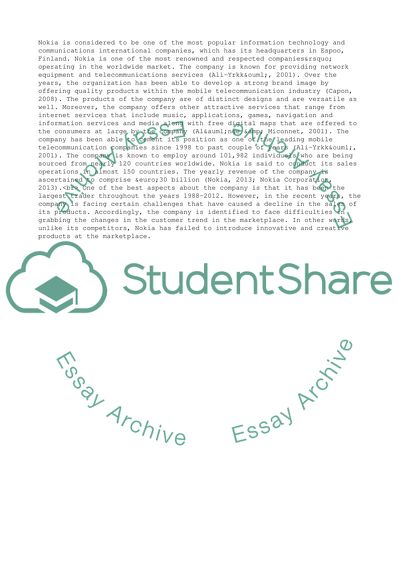Cite this document
(Case Study of Nokia Corporation Assignment Example | Topics and Well Written Essays - 3000 words, n.d.)
Case Study of Nokia Corporation Assignment Example | Topics and Well Written Essays - 3000 words. Retrieved from https://studentshare.org/business/1805521-case-study-nokia
Case Study of Nokia Corporation Assignment Example | Topics and Well Written Essays - 3000 words. Retrieved from https://studentshare.org/business/1805521-case-study-nokia
(Case Study of Nokia Corporation Assignment Example | Topics and Well Written Essays - 3000 Words)
Case Study of Nokia Corporation Assignment Example | Topics and Well Written Essays - 3000 Words. https://studentshare.org/business/1805521-case-study-nokia.
Case Study of Nokia Corporation Assignment Example | Topics and Well Written Essays - 3000 Words. https://studentshare.org/business/1805521-case-study-nokia.
“Case Study of Nokia Corporation Assignment Example | Topics and Well Written Essays - 3000 Words”, n.d. https://studentshare.org/business/1805521-case-study-nokia.


